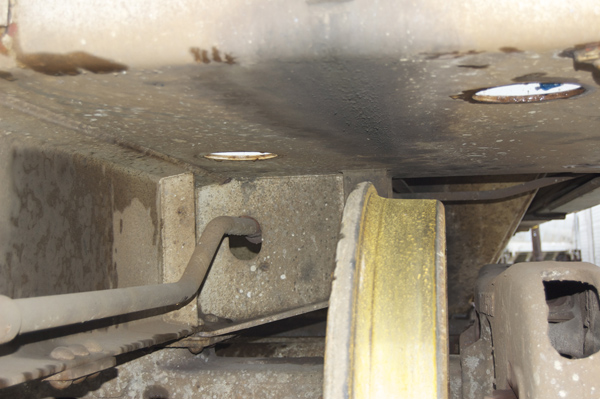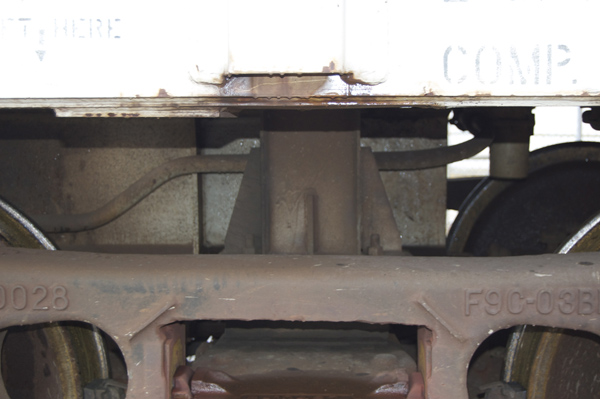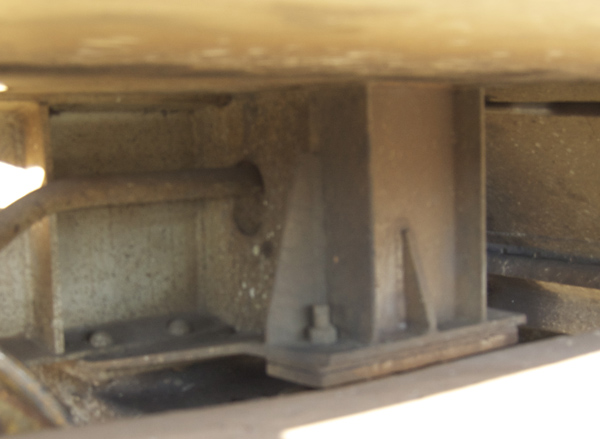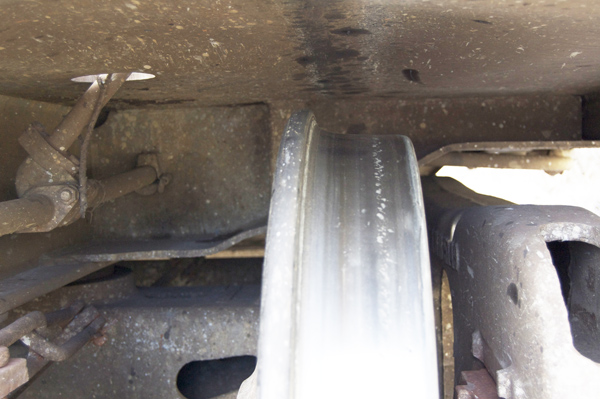As I get more involved with studying modern freight cars, I begin to see the differences that distinguish them. As with the steam era, there are both major and minor differences in the basic designs and details of the major car builders. Thirty years ago we began to understand that the so called common forty-foot boxcars didn’t all look alike. The same is true with contemporary freight cars such as covered hoppers that all look the same at first glance.
One area that really fascinates me is the underframe and bolsters. I guess it’s because these parts are typically inaccessible and hard to see from normal viewing angles. If I can get close enough to shoot the photos I want, these are two areas that I now give a lot of attention to when photographing cars. Lately, a zoom lens has been very helpful in getting these shots safely. On cars such as a boxcar, both the underframe and body bolsters will be largely hidden from view. Covered hoppers and tank cars are another story, since the ends of these cars are so open. The I&W will need a small fleet of covered hoppers, so I’ve been scouring the prototype for the proper details.
A feature of many modern covered hopper cars is the lack of a full length center sill. In its place these cars often use a pedestal bolster design such as the one shown on this Trinity Industries 5850 cu.ft. car. These photos show the angular nature of the various pieces, which would be fairly simple to model in most scales. The draft gear extensions, or what many call the center sill, is made of two fifteen inch high channels. The view in the second photo shows how the stub ended design stops before reaching the slope sheets of the hopper chutes, while the next photo shows the side extensions in better detail.
From a modeling viewpoint, you’ll notice how the bottom flange of the side extensions goes under the draft gear channels. Notice further, the additional bracing and stiffening pieces near the actual truck bolster location, where the bulk of the car weight rests. You can also see how the train line is routed through the bolster and the dirt collector/filter located between the stub end of the draft gear and the slope sheet in the second photo.
Compare the Trinity bolster to this design from an ACF CenterFlow hopper (below). Although somewhat difficult to see in my photo, the ACF car also has a stub end pedestal, however, the side extensions are much heavier and go all the way to the side sill channels. Notice how the bottom flange of the side extension on this car goes above the flange of the draft gear channel.
Here we also see extra stiffening members where needed in addition to the routing of the train line. This is the B end of the car and the pipe coming through the floor pan is from the brake gear above.
Also take note of how filthy it is under here. The bulk of the weathering consists of spattered mud and grime mixed with oil residue and rusted surfaces. In the photo above and the first photo, notice the dark streak of oily looking residue on the bottom of the floor pan directly over the wheel tread. What you don’t see, at least in these examples is a ton of caked dirt and thick buildup. Grime is the term that comes to mind for me.
Why worry about accurately modeling such details when they likely won’t be seen under normal layout conditions? Because faithfully rendering such things is very rewarding for modelers whose enjoyment in the hobby comes from modeling such prototypical details. They take pride in knowing it’s all there whether others do or not. Further, as the photos show, not all covered hoppers are the same. There’s really no such thing as a generic freight car above or below the side sill.
Regards,
Mike




0 Comments